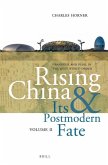Please note that the content of this book primarily consists of articles available from Wikipedia or other free sources online. The rising action, in the narrative of a work of fiction, follows the exposition and leads up to the climax. The rising action''s purpose is usually to build suspense all the way up the climactic finish. The rising action should not be confused with the middle of the story, but is the action right before the climax. The material beyond the climax is known as the falling action. In his Poetics the Greek philosopher Aristotle put forth the idea that "'' " (1450b27) ("A whole is what has a beginning and middle and end"(1450b27)). This three-part view of a plot structure (with a beginning, middle, and end) prevailed until 1863, when the German playwright and novelist Gustav Freytag wrote Die Technik des Dramas. In it, he laid out what has come to be known as Freytag''s pyramid. Under Freytag''s pyramid, the plot of a story consists of five parts: exposition, rising action, climax, falling action, and revelation/catastrophe.
Bitte wählen Sie Ihr Anliegen aus.
Rechnungen
Retourenschein anfordern
Bestellstatus
Storno








